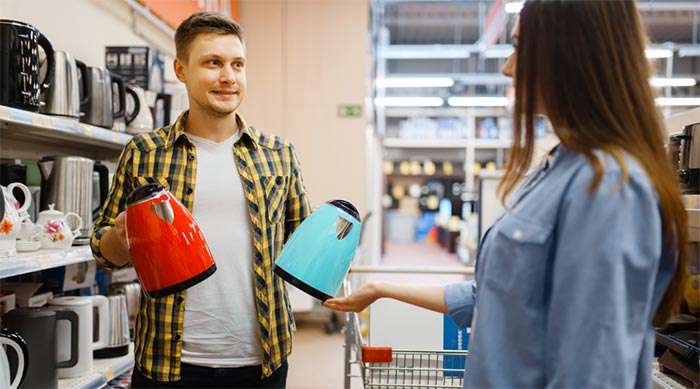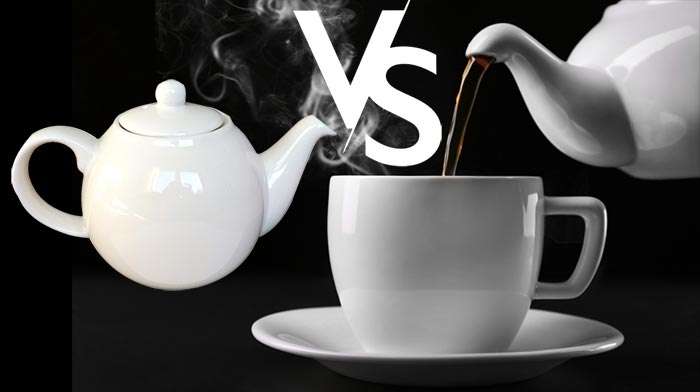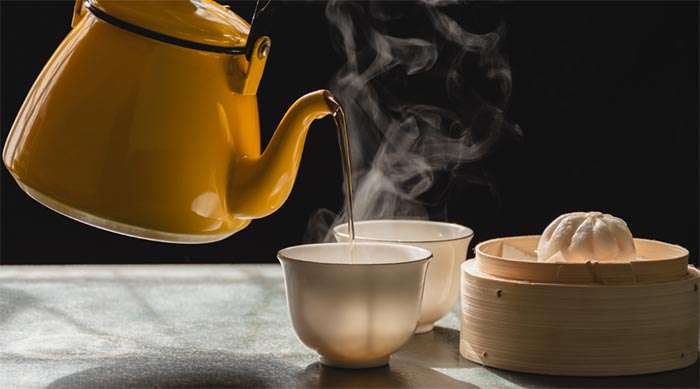Table of Contents
People in many countries enjoy making tea. But how to make tea in a kettle? There are several methods of making tea, but the traditional and most effective one is using a kettle. Kettles are household items that are used to boil water.
Moreover, whether you like black or herbal tea, knowing how to make it using a kettle will be helpful to you. For your perfect tea preparation, this guide on how to make tea in a kettle will take you through the process involving your kettle as the main tool. Thus, you can start brewing with your kettles!
Key points
- Making tea in a kettle is a traditional and efficient method
- Clean your kettle before use for best results
- Be careful not to overfill the kettle
- Let the boiled water cool for a few seconds before pouring over the tea
- Remove the tea after the recommended steeping time
- Enjoy your delightful cup of tea!
How to make tea in a kettle, especially a tea kettle
Making tea using a teapot is one of the simplest yet oldest methods to prepare a good-tasting cup of tea. In this guide on how to make tea in a kettle, you will see how to brew a great cup using this classic home appliance. Let’s begin!

1. Clean your tea kettle
Right before starting to make tea in your kettle, it’s necessary to ensure that it is clean and has no taste. Clean it completely under warm water using a mild soap fill it with fresh water and heat it until it boils. Let the water boil for a few minutes before pouring away. This will help remove any residue or contaminants.
Alternatively, fill the kettle with a solution of water and vinegar, then let boil for some minutes to remove tough stains or scales. Rinse again with clean water and dry after cleaning the kettle. The kettle is now ready to make good tea!
2. Fill up your tea kettle
Now, put fresh cold water in a clean pot. The amount of water you want in it depends on how many teas you make; usually, one inch per cup is recommended. Using hot tap water might affect the taste of your tea due to impurities that are present in it. Do not let too much water into the kettle for it will be a big mess if it boils over. Ensure that you respect the maximum fill line if any on your kettle. Now that you have filled your kettle with water, place it on the stove and turn on the heat.
How much water should you pour in a tea kettle? Whereby an inch of water per cup is typically used as a rule of thumb. Do not overfill so that boiling would cause spilling over the edge of your kettle-pot/cooker. Some kinds of tea kettles only allow refilling up to a certain mark.
3. Heat your kettle
Then, fill your kettle with water and then heat it. Take this kettle to the stove and set the fire to a high rate. Start by arranging tea leaves or bags in a teapot or cup while waiting for the water to heat up. The best thing is to employ fresh, excellent-quality tea. As soon as it starts boiling, cease direct heat contact and let it stay like that for a few seconds only. By doing so, it helps to make sure that the boiling point of your tea doesn’t exceed.
4. Pour the hot water over the tea
When it has cooled a little bit, pour this upon your tea leaves or bags that have been prepared. Pour directly into the pot if using a teapot and leave it to seep as required. Put a teabag in the mug, then fill it with hot water. Let steep for 3-5 minutes depending on the type of tea and how strong you would like it. Some teas like green or white call for less brewing time as such.
5. Strain or remove the tea
Remove the tea leaves or bags when the tea has brewed enough. In case you have used a teapot, filter your tea through either a fine mesh strainer or a tea infuser. However, if using a mug just remove the teabag from water only.
This is necessary as it prevents squeezing out any bitterness from the bag into the drink itself as one takes their time sipping on it. Drink your strained off/removed tea immediately! One can add any type of sweetener and milk they want after tasting their beverage. Just don’t be in a hurry before taking time to cool down minutes in order not to burn yourself when sipping
You can have tea whenever you feel like it now that you know how to prepare it in a kettle. Blend various teas and find out which one tastes the best for you. Cheers!
How to make tea with an electric kettle?
An electric kettle has changed the traditional way of making tea. That is why many tea enthusiasts favor it as it is fast and effective. In this tutorial on how to make tea in a kettle, you’ll learn how to make a delicious cup of tea using an electric kettle. Begin!

1. Clean your kettle
To prepare tea using your electric kettle, first ensure that it is properly cleaned. You can easily clean these parts in most electric kettles which are removable including the lid and the filter with warm water and soap, whereas the main body may be wiped with a wet cloth. If it has tough stains, add vinegar to water to remove them. Afterward, rinse clean water into the kettle and ensure it gets dry before use.
2. Fill the kettle with water
In addition, put cold water up to the desired level in your electric kettle. It is also good not to use hot tap water as it has impurities that may change the taste of your tea. Moreover, try not to fill above capacity to avoid over boiling which might spill out of the pot when reaching boiling point. Remember some have maximum fill line limits hence consider that too while putting the water in their place fill onto its base then connecting.
3. Turn on the kettle
Press the power button to activate the electric kettle. It will take a few minutes and the water inside it will start boiling, then it will turn off automatically. However, some of them come with extra features like different temperature settings for various teas making it important to make adjustments. After it has turned off, give the water about a second to be slightly cool.
4. Brew your tea
As you are waiting for the water to cool down, get ready your tea leaves or tea bags into a teapot or mug. Put either the tea bag in the mug or the leaves in the teapot. Then pour this water over tea when it has cooled down for a second. The recommended time for steeping may not be similar depending on what type of tea is being used. The best results can be achieved by following the instructions given on the pack.
Are you boiling or brewing your tea? Making tea consists of boiling and brewing too. First of all, water is boiled in a kettle or pot and then poured hot onto bagged leaves to stand while they release flavors as well as aromas into liquid resulting in a good taste and refreshing drink. Thus, both boiling and brewing are necessary stages for having an excellent cup of tea.
5. Remove the tea and enjoy
After steeping, fish out the tea leaves or bags. If you are using a teapot, you can have the tea filtered through a fine mesh strainer or tea infuser. In case of a mug just take out the tea bag from water. Do not squeeze your tea bag or else it will make your tea bitter tasting. Then you may add sweetener and milk based upon personal preferences. Before sipping, allow your cup of tea to cool down for some minutes.
Now in just a few minutes, get the perfect tea with an electric kettle. No wonder it is such a trendy choice when making this beverage due to its convenience and effectiveness It makes sense. Try out other teas and then come up with one which you will find best among those.
Disadvantages of electric kettles
Some potential downsides to electric kettles are high costs compared with traditional tea kettles, they require a power source and have the chance of failure or electrical problems. They may also be less aesthetically pleasing when compared to typical tea kettles.
Some potential disadvantages of electric kettles are:
- Higher price compared to traditional tea kettles
- The need for a power source
- Possibility of malfunction or electrical issues
- Maybe less aesthetically pleasing compared to traditional tea kettles
Difference between tea kettle and electric kettle
Through the years, tea kettles have been used to boil water. They are usually made of metal or clay and come with a handle and a spout for easy pouring. Stove tops can accommodate traditional types of kettles that need an outside heat supply to boil water. In contrast, an electric kettle is a more recent invention crafted to rapidly heat water by using an internal heating element. Such kettles are built from materials like plastic or stainless steel and are driven by electrical power. Anyway, let’s see the major differences between a tea kettle and an electric kettle.
- The way tea kettles and electric kettles heat is one of the main differences. Tea kettles need a stove or another source of heat, while electric ones contain an internally located heater that uses electricity as its primary source of energy. This makes electric versions quicker at heating water: normal teapots will take some time before the process ends, whereas, in just minutes, an electric kettle can boil water on request. This therefore makes them good for people who are in a hurry or want their cups ready faster than normal.
- There is also a distinction in terms of designs and materials they are made from. However, tea kettles are typically made out of metal or ceramics, unlike electric ones that can be made out of stainless steel, or glass. Moreover, electric kettles are often characterized by other features such as temperature controls or auto on-off switches, unlike the traditional ones which a pretty ordinary.
- They also differ in their maintenance and care requirements. This means that tea kettles require regular cleaning and sometimes descaling to eliminate mineral deposits which accumulate with time while electric ones may be easier to maintain since they are commonly made from rust-resistant substances, therefore making it easier for them to be cleaned by dishwashers.
- In terms of prices, however, electric kettles tend to be more expensive than traditional tea kettles. Electric kettle prices have always been higher because of the additional features and convenience associated with them. On the other hand, traditional types usually go at pocket-friendly prices and there exist numerous designs and styles suiting people’s various tastes.
Tea kettles and electric kettles have different features and benefits. Traditional tea kettles offer a classic and traditional method for making tea, while electric kettles provide a faster and more convenient option. In the end, the decision to choose between them is up to individual preferences.
Differences between Tea Kettle vs. Teapot
Although both are vital tools in brewing tea, there are differences between teapots and tea kettles. Below are some of them:

Tea Kettle:
- Used for boiling water with electric power
- Usually made of metal or ceramic
- Designed with a handle and spout for pouring
- Used to heat water for making tea or other hot beverages
- Can be used to make tea directly in some electric kettles with built-in infusers
Teapot:
- Used for steeping tea leaves or bags with hot water
- Usually made of ceramic, porcelain, or glass
- Designed with a lid, handle, and spout for pouring
- Can have additional features like filters or infusers
- Can be used to serve multiple cups of tea
Hence, Tea kettles are mainly for heating water, while teapots are for brewing and serving tea. Both are essential for making tea, but they serve different functions in the process.
Conclusion
To make tea in a kettle, the act of boiling water is an old-fashioned ritual that will always give you warmth and peace. In addition, there are no specific types of teapot that you may go for; the procedure is as simple as black tea which makes it sweet enough. So, in case you feel like drinking something warm, grab your electric teapot and you will prepare the best tea there could ever be. Have fun!

